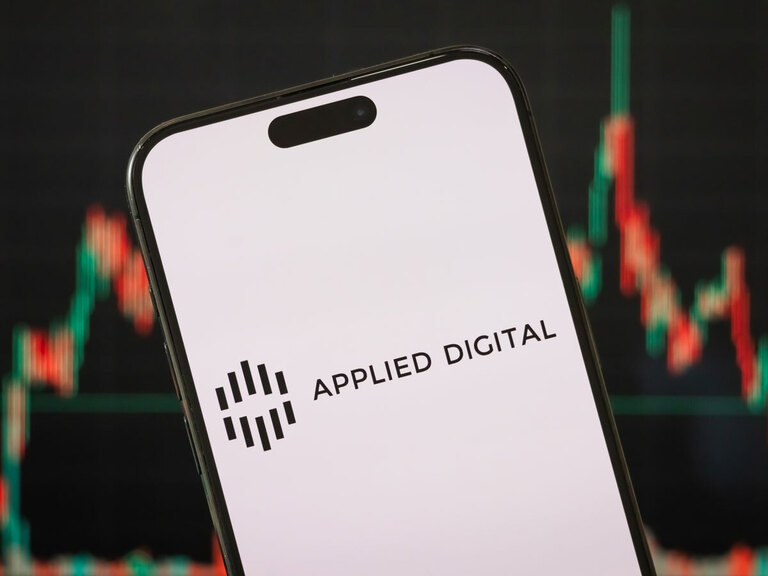The Global X Telemedicine & Digital Health ETF [EDOC] has felt both fever and chills this year as healthcare in the coronavirus pandemic continues to shift online.
Its shares climbed from $15.97 on 24 September 2020’s close to $22.63 at the close on 12 February this year. The main driver was the Covid crisis, which saw doctor’s surgeries and hospitals either closed to non-virus patients or severely restricting face-to-face appointments.
These measures were intended to ease the burden on health services trying to battle the pandemic before vaccinations were ready.
As an alternative, patients were offered digital consultations. New health technologies came to the fore to provide treatments and monitor from a distance.
EDOC undulating shares
As vaccines such as Moderna's came on-stream, the EDOC share price dropped to $17.50 at the close on 13 May as a reopening of social activity, including doctors waiting rooms, seemed imminent.
However, fears surrounding the more vaccine resistant Delta Covid variant, and the onset of colder weather leading to a rise in cases has brought investors back. The EDOC now sits at $18.31 at the close on 24 September.
The EDOC invests in companies positioned to benefit from further advances in the field of telemedicine and digital health. This includes companies involved in telemedicine, health care analytics, connected healthcare devices, and administrative digitisation.
$300Billion
Forecasted valuation of the global telemedicine market by 2028
Global X believes the sector shows high growth potential. It says the global telemedicine market increased 35% from 2019 to 2020, exceeding $55bn. Forecasts suggest the market could reach nearly $300bn by 2028. The pandemic has helped increasing adoption of digital health services, with many turning to telemedicine for the first time.
The EDOC has a year-to-date total daily return of -3.27%, highlighting the success of the vaccination campaign and hopes that the pandemic was getting under control.
How does the EDOC compare with other healthcare innovation ETFs?
The EDOC has $618.9m of total assets under management, with holdings in 40 companies. DexCom, which makes continuous glucose monitoring devices, has the biggest weighting at 5.8%. The company's shares have raced from $323.96 at the close on 13 May to $572.73 at the close on 23 September. Its technology helps patients quickly see their glucose readings via their smartphones.
Omnicell [OMCL], which has a 4.71% weighting, runs automated pharmacies via the cloud, and Illumina [ILMN], a developer of a Covid test which enables genome analysis, has a 4.46% weighting.
In comparison, the iShares Healthcare Innovation UCITS ETF [HEAL] has assets of $2.5bn. Its shares have climbed from $9.83 at the close on 3 June to $10.41 at the close on 24 September. It has risen 2.14% in the year-to-date, outperforming the EDOC.
It offers investors access to companies across the world that are focused on innovation within global healthcare services, across both developed and emerging markets. Shifting global demographics, social change and an increased application of technology in health as drivers that HEAL has forecast. Its main holding is also DexCom, with 1.24%.
What analysts think about healthcare ETFs
“[Health tech], the convergence of health care and technology, has the potential to meaningfully reduce costs and improve efficiencies. We believe both will be needed in large measure to ensure a more sustainable health care spending path,” says Frederique Carrier, head of investment strategy at RBC Wealth Management. “A new model is emerging in which patients are the central health care decision-maker. This has been made possible by recent advances in big data and artificial intelligence. With hospitals turning away patients requiring other treatments, and lockdowns forcing lifestyle changes, the trends became entrenched. As the world returns to normal, some of the changes implemented by the medical professions during the pandemic are here to stay.”
“[Health tech], the convergence of health care and technology, has the potential to meaningfully reduce costs and improve efficiencies. We believe both will be needed in large measure to ensure a more sustainable health care spending path” - Frederique Carrier, head of investment strategy at RBC Wealth Management
The fundamentals look strong for EDOC, as it combines the defensive nature of health (there are always sick people who will need treatment) and the growth of digital innovation and technology.
According to ETF Trends, the EDOC is likely to benefit from consistent demand and rising prices over the long term. It said national healthcare expenditures accounted for over 17% of US GDP in 2019, and is expected to hit $6.2trn — or 20% of GDP — by 2028.
“[The US] for-profit system continues to provide tremendous revenue for drugmakers, hospital operators, insurers and others,” wrote Ben Hernandez of ETF Trends. “And instead of putting all your eggs in one basket, healthcare ETFs allow investors to diversify across a group of stocks or industries.”
Disclaimer Past performance is not a reliable indicator of future results.
CMC Markets is an execution-only service provider. The material (whether or not it states any opinions) is for general information purposes only, and does not take into account your personal circumstances or objectives. Nothing in this material is (or should be considered to be) financial, investment or other advice on which reliance should be placed. No opinion given in the material constitutes a recommendation by CMC Markets or the author that any particular investment, security, transaction or investment strategy is suitable for any specific person.
The material has not been prepared in accordance with legal requirements designed to promote the independence of investment research. Although we are not specifically prevented from dealing before providing this material, we do not seek to take advantage of the material prior to its dissemination.
CMC Markets does not endorse or offer opinion on the trading strategies used by the author. Their trading strategies do not guarantee any return and CMC Markets shall not be held responsible for any loss that you may incur, either directly or indirectly, arising from any investment based on any information contained herein.
*Tax treatment depends on individual circumstances and can change or may differ in a jurisdiction other than the UK.
Continue reading for FREE
- Includes free newsletter updates, unsubscribe anytime. Privacy policy





